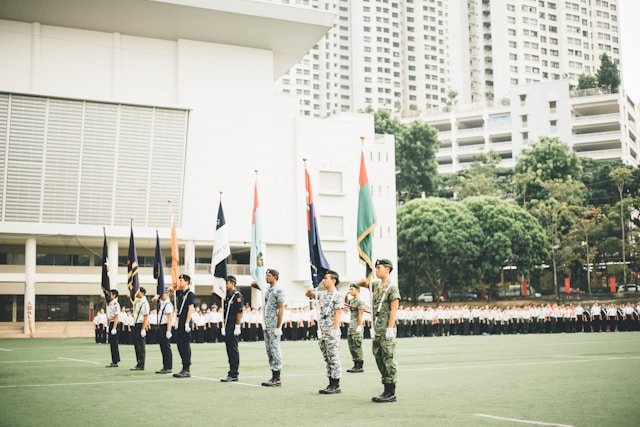In an increasingly fast-paced and unpredictable world, strong leadership is more important than ever. Whether you’re running a small startup or steering a multinational company, the ability to lead with clarity, consistency, and resilience can define success. Interestingly, some of the most effective leadership lessons come not from corporate boardrooms but from the battlefield.
Military leadership offers a time-tested framework built on discipline, decisiveness, and teamwork. These values aren’t about command and control—they’re about structure, purpose, and people-first accountability. The Colonel and The Coach demonstrates that combining military precision with modern coaching techniques results in authentic, effective leadership that creates real impact.
This article explores how core military leadership principles can be applied to business environments, enhancing decision-making, team performance, and organizational growth. If you’re seeking to strengthen your leadership approach or develop the next generation of business leaders, the military mindset may hold the keys you’re looking for.
Core Principles of Military Leadership
At its foundation, military leadership revolves around clarity of mission, well-defined structure, and the ability to respond to pressure. These principles create a system that is both efficient and resilient—qualities any business leader would value.
Mission-Focused Management
In the military, everything starts with the mission. Leaders ensure that every strategy, task, and resource allocation contributes directly to achieving the overarching goal. This mission-first approach keeps teams aligned and reduces distraction.
In a business setting, this translates to strategic goal-setting, effective delegation, and continual performance tracking. Leaders must break down long-term visions into actionable steps and ensure that every team member understands how their work fits into the larger objective.
Moreover, mission-focused management means proactively anticipating challenges. Leaders don’t wait for problems—they prepare for them. Scenario planning, risk mitigation, and backup strategies keep the organization moving forward even when obstacles appear.
Chain of Command Structure
The military’s chain of command ensures order, accountability, and rapid communication. While the rigid hierarchy may not fit all business cultures, the underlying principle—clarity of roles and decision-making authority—is essential.
Establishing a clear reporting structure allows teams to move faster and with more confidence. People know who is responsible for what, which minimizes bottlenecks and confusion. Strong leaders encourage upward and downward communication within this structure, ensuring that concerns, updates, and ideas flow freely.
Respect for leadership doesn’t come from titles alone. It’s earned through competence, consistency, and communication—qualities that any leader can adopt, regardless of organizational structure.
Adaptability in High-Pressure Situations
Military leaders train to stay flexible, even in life-threatening conditions. They assess evolving situations, pivot strategies, and maintain their team’s morale under duress.
In business, adaptability is equally crucial. Market conditions shift, technologies evolve, and crises happen. Leaders must stay composed, assess available information, and make timely decisions—often with incomplete data. Encouraging a team culture that values flexibility, critical thinking, and resilience helps organizations thrive in uncertainty.
Translating Military Leadership to Business
Military leadership isn’t about barking orders—it’s about consistency, clarity, and compassion under pressure. Here’s how business leaders can put military leadership principles into practice.
Decision-Making Under Uncertainty
Military environments rarely offer perfect clarity, yet decisions must be made. Leaders learn to make high-stakes choices with limited data by relying on preparation, instinct, and confidence.
In business, similar scenarios arise—think crisis response, product launches, or financial pivots. Leaders must weigh risks, consult their team, and act decisively. Being too cautious can stall progress; being too hasty can lead to mistakes. The key is developing a structured process for evaluating options and maintaining readiness to adjust as new information emerges.
Leading by Example
The most respected military leaders lead from the front. They model the behavior, ethics, and work ethic they expect from others.
Business leaders should adopt the same philosophy. When executives show up early, stay engaged, admit mistakes, and prioritize the team’s success over personal ego, they build deep trust. Employees are more likely to go the extra mile when they see their leaders doing the same.
This leadership by example fosters a culture of accountability and mutual respect—cornerstones of any high-performing organization.
Clear Communication Strategies
Military communication is concise, specific, and unambiguous. Miscommunication in the field can cost lives; in business, it can cost clients, deals, or morale.
Business leaders should aim for similar clarity. Communicate goals, roles, deadlines, and feedback in ways that leave no room for confusion. Use check-backs to confirm understanding, simplify messaging, and foster open feedback loops. Clarity boosts productivity and prevents the kind of misalignment that leads to rework or conflict.
Developing High-Performance Teams
Great leaders don’t succeed alone—they build great teams. A military-style approach helps shape team dynamics based on mutual trust, shared responsibility, and clear expectations.
Building Trust and Cohesion
Trust isn’t built overnight, but it’s essential for teams that need to perform under pressure. Leaders must consistently act with transparency, honesty, and fairness. Avoiding favoritism, recognizing contributions, and offering constructive feedback are key to building a culture of mutual respect.
Cohesion develops when teams face challenges together. Businesses should encourage regular collaboration, provide opportunities for open dialogue, and create shared experiences that strengthen bonds. This is where we excel—we emphasize human connection over rigid processes.
Empowerment and Delegation
Empowered employees take initiative, solve problems, and develop faster. But empowerment doesn’t mean absence of leadership—it means intentional delegation with support.
Military leaders delegate based on capability, provide the necessary tools, and trust their teams to deliver. Business leaders should do the same. Define success clearly, give room to execute, and offer support when needed—not micromanagement.
Effective delegation builds confidence, expands capacity, and prepares the next generation of leaders from within.
Strategic Planning and Execution
Planning and execution are critical in both military operations and business strategy. Success hinges on setting the right targets and preparing for challenges.
Setting Achievable Objectives
Military leaders use the SMART goal framework—specific, measurable, achievable, relevant, and time-bound—long before it became a buzzword in corporate culture.
Business leaders should break long-term goals into quarterly or monthly targets, and make sure everyone understands their individual contribution. This structure creates motivation, focus, and alignment across departments.
Risk Assessment and Mitigation
Risk is ever-present in both war zones and markets. Great leaders don’t eliminate risk—they manage it. Through careful analysis and contingency planning, they reduce vulnerability and improve resilience.
Conduct regular SWOT analyses (Strengths, Weaknesses, Opportunities, Threats), scenario plans, and stress tests. Build buffers into resources. Be ready to pivot when assumptions prove wrong. And always—always—communicate risk plans clearly to your team.
Resilience and Crisis Management
Every organization will face disruptions. What separates strong companies from fragile ones is how their leaders respond.
Maintaining Composure During Disruption
Military leaders train for composure. They slow down mentally when the pressure increases, keeping their thinking clear and deliberate.
In business, leaders must project calm, maintain perspective, and make reasoned decisions even when the stakes feel high. A crisis is the ultimate test of leadership—how you respond sets the tone for your entire team.
Practice regular simulations, learn from smaller challenges, and develop a personal system for managing stress. Emotional intelligence is just as important as strategic thinking in a crisis.
Lessons Learned From After-Action Reviews
The military’s After-Action Review (AAR) is a powerful learning tool. After every mission, leaders gather their teams to review what went well, what didn’t, and what to improve.
Businesses should use this same approach. Hold structured debriefs after launches, campaigns, or failures. Focus on facts, not blame. Document insights and apply them to future efforts.
AARs promote continuous improvement and normalize learning from mistakes. They’re a key tool in building a culture of growth.
Ethics and Integrity in Leadership
At the heart of military leadership is a commitment to ethics and integrity. The same should hold true in business.
Upholding Accountability
Accountability starts at the top. Leaders must own their actions, admit missteps, and model responsibility. This encourages the same behavior throughout the team.
Instead of finger-pointing, leaders should focus on solving problems and learning lessons. Clear expectations, consistent follow-through, and transparent reporting are the foundation of true accountability.
Fostering a Culture of Respect
Respect is non-negotiable in military units—and it should be the same in business. Treat every person, regardless of role, with dignity. Listen more than you speak. Recognize diverse perspectives.
Creating a respectful environment fosters psychological safety, where people feel safe to contribute ideas, ask questions, and challenge assumptions. This culture doesn’t just feel good—it fuels innovation and long-term success.
Training and Continuous Improvement
No military leader ever stops training. They sharpen their skills continuously to stay ready for whatever lies ahead.
Mentorship Programs
The best military leaders learn from those who came before them. Mentorship is a vital part of leadership development. In business, structured mentorship programs accelerate growth and reduce trial-and-error learning.
Mentors offer guidance, share experience, and provide a sounding board for tough decisions. They help develop emotional intelligence and professional confidence, especially for new leaders navigating unfamiliar roles.
Ongoing Skills Development
Training doesn’t end at onboarding. Leaders need to keep developing through workshops, role-playing, case studies, and scenario planning. We emphasize the value of small, steady improvements over flashy, one-off events.
Invest in training programs that include real-world simulations, soft skills practice, and feedback mechanisms. Focus on communication, conflict resolution, adaptability, and strategy. These are the muscles of great leadership—and they grow through repetition.
Case Studies: Military Leadership Success in Business
Many of today’s most respected business leaders have military roots. Their ability to manage pressure, organize teams, and make quick decisions often sets them apart.
One veteran-turned-CEO credited their military background with giving them the tools to lead through a global crisis with confidence. Another entrepreneur used military planning techniques to grow a struggling startup into a thriving company.
A logistics company saw a 20% improvement in team efficiency after adopting military-inspired role clarity and performance tracking. A tech firm navigating a tough market pivot credited its military-trained COO with guiding the team through ambiguity and burnout.
These stories aren’t about command and control—they’re about clarity, character, and care.
Potential Challenges and Solutions
Adapting military leadership to business isn’t always seamless. Challenges include:
| Challenge | Solution |
| Rigidity | Promote flexibility within structured systems |
| Blunt communication | Use empathy with clarity |
| Task-focus over people-focus | Prioritize relationships alongside results |
| Hierarchical mindset | Build trust through service, not authority |
Coaching can ease the transition, especially when it focuses on emotional intelligence and adapting leadership style to culture.
Military leadership offers powerful strategies for today’s business leaders: clarity, accountability, adaptability, and servant leadership. When these principles are applied with empathy and purpose, they create cultures of trust, growth, and resilience.
Here at The Colonel and The Coach, we blend military discipline with coaching insight to help leaders lead better—not just by enforcing rules, but by serving people. It’s this blend of strategy and care that drives lasting success.
Business is no battlefield—but it is a test of character, clarity, and composure. By adopting proven military leadership strategies, leaders can build stronger teams, make better decisions, and create organizations that thrive under pressure.


